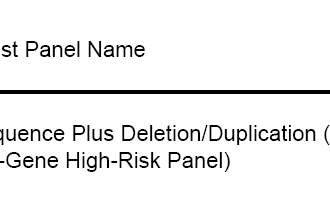On Tuesday, the Partnership to Fight Chronic Disease (PFCD), in collaboration with WellPoint, held a Capitol Hill Briefing titled “Partnerships in Health: Innovations in Care Delivery Models and the Role of Physician Incentives.” It was part of an ongoing effort to highlight barriers to effective prevention and management of chronic disease.
On Tuesday, the Partnership to Fight Chronic Disease (PFCD), in collaboration with WellPoint, held a Capitol Hill Briefing titled “Partnerships in Health: Innovations in Care Delivery Models and the Role of Physician Incentives.” It was part of an ongoing effort to highlight barriers to effective prevention and management of chronic disease.
PFCD Policy Director Candace DeMatteis served as the moderator for the briefing. Much of the discussion was focused on identifying best practices and improving care coordination and delivery to ensure the best possible care and outcomes.
The first speaker, Kavita Patel, MD, Managing Director for Clinical Transformation and Delivery at the Engelberg Center for Health Care Reform at the Brookings Institution, stressed the importance of patient-centered medical homes and incentives for providers. She said that investment in patient-centered medical homes now will prevent trillions wasted later. Additionally, she emphasized the importance of incentives for providers, especially for primary care physicians whose salaries are much lower than specialists. These incentives will help providers – especially primary care physicians – make decisions that benefit their patients’ outcomes and ultimately the broader health care system.
Ruth Raskas, VP of Clinical Health Policy at WellPoint, provided specific examples of how WellPoint has been a leader in implementing patient-centered medical homes. “Our Patient-Centered Primary Care Program, based on our positive experience with Patient-Centered Medical Homes, encourages enhanced care coordination, information sharing and patient-centered care by all primary care physicians. We see this initiative as an essential part of prevention and wellness efforts that can ultimately improve overall health.” She also added that primary care physicians have played a significant role in coordinating wellness and prevention.
The final speaker was Director of Public Policy and Advocacy at GlaxoSmithKline (GSK) Jon Easter who spoke about new care models from the perspective of an employer. He posed the question, “Why do we need a new delivery system?” His answer was that our current system is a reactive one – built to treat a smaller and healthier population for acute conditions. What we need, though, is a system that is more proactive, sustainable and effective – one that takes a coordinated and population based approach. Jon gave the example of GSK’s employees voluntarily enrolling in patient-centered medical homes as an add-on to their PPO plan. Even though the program just started in January 2012, GSK employees have been very happy with the amount of attention they are receiving from their doctors and the personalized plans that they are creating with their doctors, which, in a short time, have demonstrated improved health outcomes.
The audience was engaged and given the time to ask questions. They were most interested in how patient-centered medical homes and incentives for providers could most effectively be implemented. There is no one solution to the nation’s health care crisis, and as such, this was just another event designed to highlight solutions to some of the problems our country is facing and also to share best practices. We’ll be interested to see the results from GSK’s newly implemented patient-centered medical homes and hope that their results will help move other companies in this direction.








